https://www.youtube.com/watch?v=gc5S9PuGgOQ
Jimmie Vaughan Style Blues Guitar Lesson - EP109

Hey , everyone .
This is Brian from active melody dot com .
Well , this week's guitar lesson is a Jimmy Vaughn style lesson .
And uh so Jimmy was obviously the , the brother to Stevie Ray Vaughan .
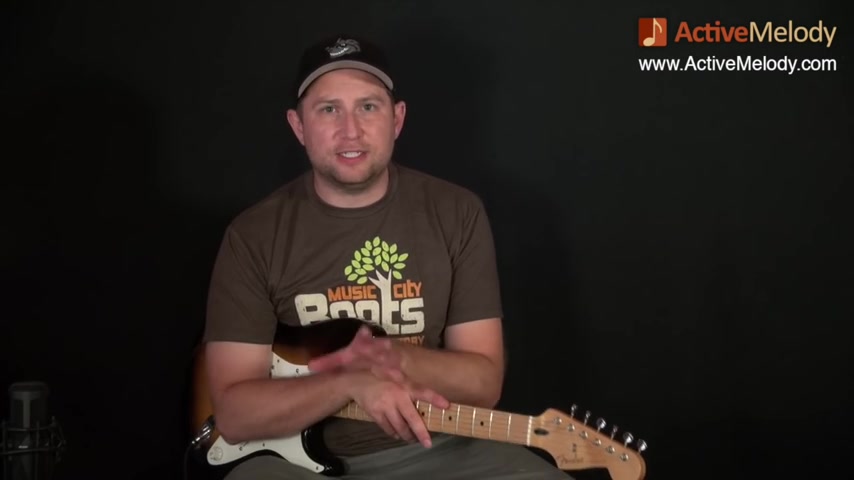
And I think I read somewhere that uh he showed Stevie Ray how to play initially .
So obviously the older brother to Stevie Ray and um a big influence on , on Stevie Ray's plan , but Jimmy has his own style that's very unique .
I think uh you can always tell it's his licks just by a few , just within a few notes .
And a lot of what gives him his signature sound is the fact that he'll take the same licks and , and just transpose them by using a Capo when he , when he plays .
And so one of the things I did uh to honor that in this lesson is for jam , for the jam tracks .
I've got two versions .
I've got the , the key that I played in , in the intro , which is in the key of E , but I've also got one in the key of G .
So if you want to play along with that jam track , you can put a capo on your third fret here and take all these licks that we're about to learn and you can just transpose them to a higher position on the neck just by using the capo there .
So anyway , that , that would be something that you would hear Jimmy do .
He would , he often he plays in the key of G a lot .
I see him capo in there on the third fret .

So uh we're gonna split this lesson into two videos in this video .
We're going to take a look at the first half .
But if you want to watch the second half as well as download uh all the jam tracks and the table for everything .
You're gonna want to go to active melody dot com and look for ep 109 .
So let's go ahead and start with the first half .
All right .
So let's talk through tone settings before we jump into the notes of this .
Now , I am playing on a new stratocaster new for me .
Anyway , this is a Jimmy Vaughn signature series .
Um How appropriate for this week's lesson , right ?
So you can see his signature here on the back of the head stock .
Now , these are made in Mexico .
Uh So they don't have the same resale value maybe as a US strap .
But um but they're not as expensive either .
So they're just , they're very uh good guitar for the price .
They come standard with these uh these Texas uh special pickups which are really hot and just great sounding awesome playing awesome sounding guitar .

So , if you're in the market for a stratocaster or an electric guitar , uh , check out the Jimmy Vaughn signature series .
Um , ok .
Uh Outside of that , I've got my tone , I've got my uh pickup selector switch on the middle pickup .
My volume is at about 80% and my tone for this pickup is at about uh or is at 100% .
So it's all the way up on 10 .
Um I'm running through a tube screamer Ts 808 pedal by Ibanez .
So I've got the overdrive at about 40% and the level and the tone are at about 80% on that pedal .
Now , the only other thing I'm using is a little bit of reverb on the app and that's it .
Very simple setup .
Uh Jimmy Vaughn plays uh has a very simple setup as well .
You can see some of his rig rundown videos on youtube if you ever do a search for that .
Um And listen to his guitar tech explain that he usually uses a , I think a stock boss tremolo pedal and I know he's got two amps that he plays too .
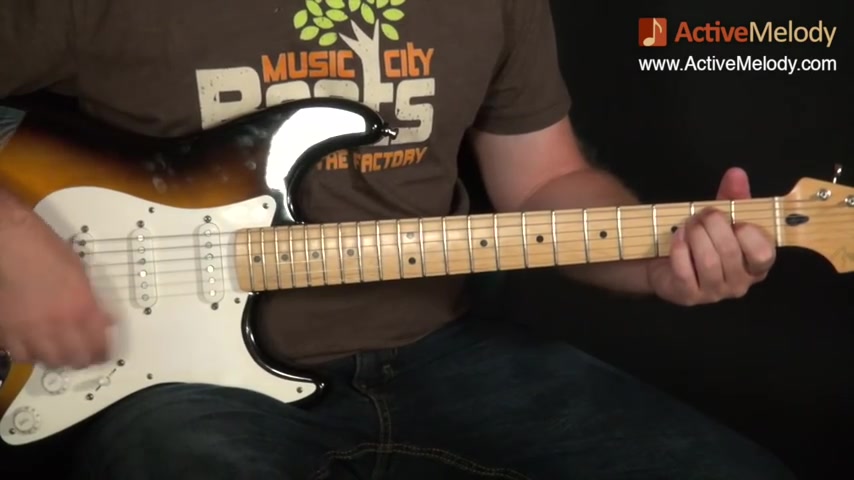
But uh I think everything is pretty basic .
He doesn't have any fancy delays or , uh or , you know , phaser pedals or any of that stuff .
So , um All right , it's a clean tone for the most part .
A little bit of growl .
But now Jimmy Vaughn plays often with , uh , well , he plays with his fingers .
He , back in the Thunderbirds days , I've seen videos of him playing with a pick , but for the most part , he's just using his uh fingers .
He plays like that .
He kind of plucks .
Um I didn't wanna do that for this just because a , I'm not as good at playing that way and b I know a lot of you are pick players .
So what I did was I found a , a kind of a nice compromise and this is the way that I would do it .
And uh now you can , if you're more comfortable playing with your fingers , go for it , that's cool .
But the way that I'm gonna do it is just by playing a hybrid techniques .

So I'm gonna pick some strings , but I'm gonna pluck some strings mainly this one string here , this high E string .
I'm gonna pluck that with my middle finger .
Um So I'm gonna show you that technique .
Um And then another thing to point out is we're , this thing is in the key of E .
So we're gonna start off in pattern two of the key of E .
I'll explain what that means when I say pattern two .
But for premium members , um I've got a version of the jam track .
So there's two versions of the jam track , there's one in the key of E .
So you can , it's missing the lead part , obviously , but there's one in the key of G .
Now , if you want to try that one out , the way you're gonna do that is you're gonna put a cap o on the third fret and play all of these same notes that were licks that we're about to learn here in this and you're just gonna transpose them .
So he's playing them down here instead of playing them down here , you're gonna play them here .
So now you can , with the Capo , you can have the open strings and that's why you see Jimmy Vaughn use a capo .

It allows him to play licks like sounds a little out of tune .
But he's , he plays these kind of doubles up their string , his strings and he will play a lot of uh licks that have open strings and by putting the capo , he can just take the same licks and just transpose them anywhere .
And a lot of artists did that , uh Albert Collins does that as well .
So if you ever see guys playing lead and you see them playing with a cable , that's why they don't want to relearn their licks .
They just , they have their , their bag of tricks that they have and they stick to them .
And I think that's kind of cool .
It gives it and that also gives him a very signature sound .
So anyway , I wanted to include that .
So , um , so that you guys can start thinking about as you're learning and , and growing in your knowledge , uh you can start transposing this stuff and playing it .
Um you know , in a different , different keys , you're not limited to just the keys that I'm showing you .
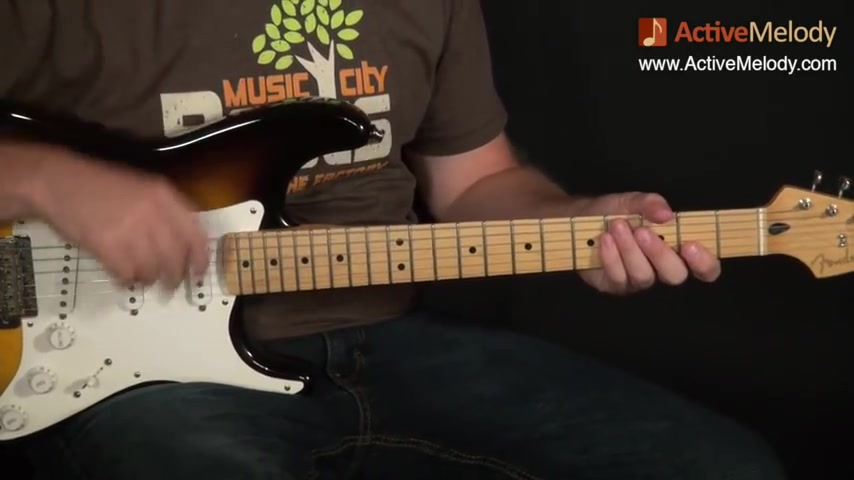
Um And some of you may want to adapt his style of playing and just always go with the capo .
So , and you can do the math and figure out where you need to put the capo depending on the key .
But that's , you know , obviously there's artists that do that and they make great careers out of that .
So just uh another option for you .
All right .
So as I mentioned , we start this in the , in uh this , in the key of E , we start this in pattern two of the minor pentatonic scale for the key of E .
So pattern one just as a quick refresher would be here and your nut becomes kind of your root for it .
That's where all those open strings are now .
Pattern two then would be here .
So , uh all of this is covered by the way , all there's five patterns they're all covered on the blues lead course , uh which is available at active melody dot com .

So if you're not familiar with what I'm talking about , and when I say pattern , um I go through all those patterns , all five patterns and give you example licks .
So , um but I'm gonna assume that a lot of you have already done that or know what I mean , when I say pattern two .
So we start this look like this .
So it's just a blue shuffle and a , that's what I did for the rhythm track .
It was real simple .
And we start with this .
So let's learn that .
Let's learn these first three notes .
So we're gonna start with our ring finger on the second string , third fret , and as soon as I pluck it , I'm gonna slide it up to the fifth fret , second string .
Now we're gonna come to the first string on the third fret and remember what I said when we're playing these first string notes , we're gonna pluck .

So let me show you the notes first of the left hand and I'll show you what I'm doing the right hand and then we're gonna come up to the fifth fret , first string .
Very easy .
Those are your first three notes and the timing , you know , just , you're gonna wanna make sure you , you know , listen to , to how I played and try and get the timing of that right now .
Watch , watch the right hand .
So we picked that note .
Second string can watch this pluck that note and plug that note and that's all I'm doing .
I'm using my middle finger for that and I'm just plucking now , if you want to use your ring finger , if that makes it easier , go for it .
Um But that , that plucking gives you a different tone than picking it , picking it is too uniform , I think .
Um , you know , because it's plastic on the string instead of flesh on the string .
It's a different tone when you , you have your fingers on there .

So OK , so the second time through , I went , now watch this , those notes are the same .
Now , I just , now we're gonna pluck that .
So it's a 3rd , 1st string .
We're plucking that and then I'm gonna introduce my pick onto the first drink .
So we're plucking the first one and then we're gonna go .
Now , that's done with a pick those three notes .
123 .
Now watch how I'm doing that with the right hand .
Let's do the right hand first .
It's a down stroke and then an upstroke , the downs stroke is on the one string .
The upstroke is on the two string .
The left hand , you have the open string there and then you , I use my pointer finger here on the 3rd 2nd string .
I did that upstroke there and then I flicked it as I took my finger off .
And by doing that , it's a pull off .

It allows you to play those three notes really quick like that .
And you can see it , it sounds really , really fast and it is fast .
But if you look at the motion that's going on , just start study the right hand .
I'm just going like this .
Not that hard .
So that's , that's all I'm doing for that .
So if we back up we have because remember we're gonna pluck that note and then we're gonna go and play those three with the pick .
Now , the next thing I played was this , now , watch that .
All of that is being plucked in my right hand except for that second string when I slid from .
So I started it here .
Third fret , uh , second string , split it up to the fifth fret again .
We've already done that .

Then we come to the third fret , first string and I'm gonna go back and forth between the fifth fret and the third fret on the first string .
Now see what the right hand is doing .
So again , it's just that plucking thing and it allows you to get some really good dynamics to go .
You can start it off soft or start off loud rather and then kind of get , make it soft and then build back up .
You can do a little more I think .
So when I , after that , I did one , so I did three of them .
One , three .
Now watch this for that .
I slid up to the seventh thread on the first string and then back to the third for first drink .

So when we play this note , we're gonna give it some vibrato , which is kind of hard to do on that first string there because you feel like you're gonna pull it off the fret board there .
So you , you can really only push it one way which is this way .
So let's back up from the start we have .
All right .
So the next part goes like this very Jimmy thing to do .
So we're gonna , again , we're gonna start from the third fret , uh second string and slide up to the fifth fret , 3rd , 1st string , fifth fr , first string .
We've already done these notes , this little box we just keep playing in .
It's all right there in that pattern too .
Now , watch this .
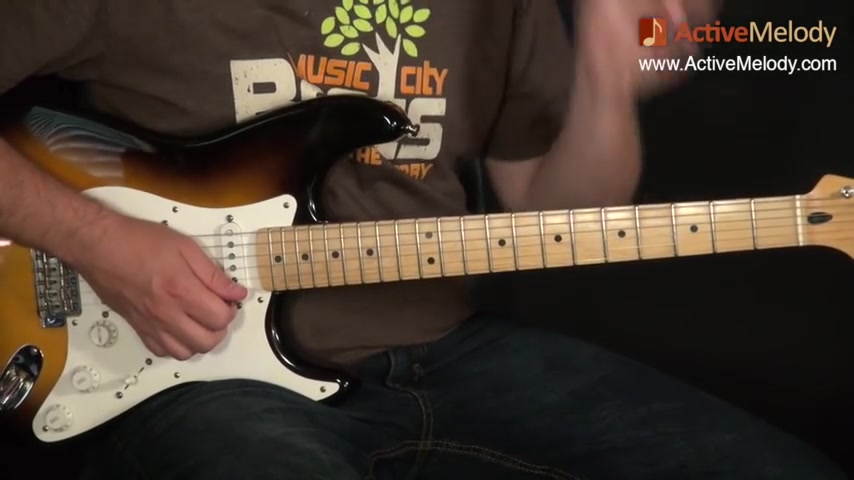
Now for this , we're gonna take that third fr first string , push it slightly sharp .
Hear it .
Now , watch this and you take your fingers off the fret board and play string one and string two downs stroke with the right hand upstroke with the right hand downs on one upstroke on two .
So , and after that , you're gonna play now this is a little bit tricky .
Um , just because it'll be kind of different for you , but it doesn't mean it's difficult .
It just means it's , it's gonna be kind of maybe for some of you , maybe a little awkward .
But what you're gonna do is you're gonna play strings one and two , you're gonna play both strings , but you're going to start here on the third fr second string and you're going to slide up to the fifth fret on the second string , uh playing strings two and one at the same time .

Now , string one is an open E string or so .
So that's the E note .
Well , when you slide this second uh string from the third Threat to the Fifth Threat .
You're playing an E note there .
So , really , you're playing two E notes and it's , there's a power though , in doubling that up , it just gives it more of a , I don't know how to even describe it .
There's a drone effect that goes on by having the one string ring out .
So you can see once you slide up , once you're gonna come back and slide up again , then slide it down .
I didn't pick it that time and then I did a pull off there on the third fret , second string .
So that'll be , the challenge is going from here sliding it down and doing the pull off without bumping other things .

Um And when you do it up to tempo , it sounds like that .
And here's another little technique that will help with this little uh tip .
When you do your pull off from here , pull off this way .
See the direction I'm pulling , I'm pulling this way because what will happen is if you hit , if you happen to hit that one string , that's OK .
Now , if you pull off this way , you can bump that uh D or the G string rather , and it's not gonna make sense .
But if you bump this string , it works .
So , so anyway , that's that technique .
So if we put that little lick together , that third lick it goes .
So let me do it again .
Slowly .
OK .

Now , there's one other thing to learn , which is , so that's a very Jimmy thing .
He does that all the time .
Now , what we're gonna do is we're gonna start on the 2nd , 3rd string .
We're gonna slide up to the fourth thread on the third string that's done with the pick .
Now we're gonna take our middle finger .
I'm gonna pluck that twice on the one string , the open E string .
Now it's this .
So then I take my pointer finger and I come down to the third fret , second string and I pluck that with my middle fingers .
I'm plucking now in the second string and then as soon as I pluck it , I flick it with my pointer finger here on the left , on my left hand and I do a pull off .

So when we do that together , slowly it goes OK .
And then we're gonna slide back down to the second for third string , open G string or the uh third string .
So you slide up by the G string and then your last note there is the second fret , fourth string and that's how he does .
You know , a lot of times you'll hear guys like Albert King uh play something .
Let me get the right key here .
Oh Yeah .
He played well .
That's what he's trying to emulate .
I think when he's doing that .
But you can't bend here .

I mean , you could , but it would , I guess if you're especially if you're playing that on acoustic , you couldn't do it and , and it kind of gets awkward to start bending , uh , you know , down on the third string there , uh , this close to the , to the nut because you don't have as much leverage as you do higher up .
So I think what he's doing is he simulating that by sliding it up and that's how he's getting that effect .
All right , let me play .
that's the notes .
Now , I'm finding myself as I'm doing that when I'm doing that .
Um I've done it two ways .
So , so try this .
Uh 1 may be easier for you .
But when you slide up and you play that one string , you can either use your ring finger and do it or your middle finger for some of you .

It may be easier to do your ring finger and then use your middle finger on the second uh string .
Now I find myself doing kind of either or , but anyway , that's the , that leg .
Now , the second time through that last time through I went .
So it starts exactly the same .
That's the same .
Now , instead of doing the , all I did was come down to the second fret .
Uh third string , play strings , three , two , a pluck two , that's an open B string and the open two string and then watch this .
There's a , a hammer on there on the first fret .
So after that hammer on , then I come down and play with my middle finger on the second frat , fourth string .
And really , those are the notes and the eco .
OK .
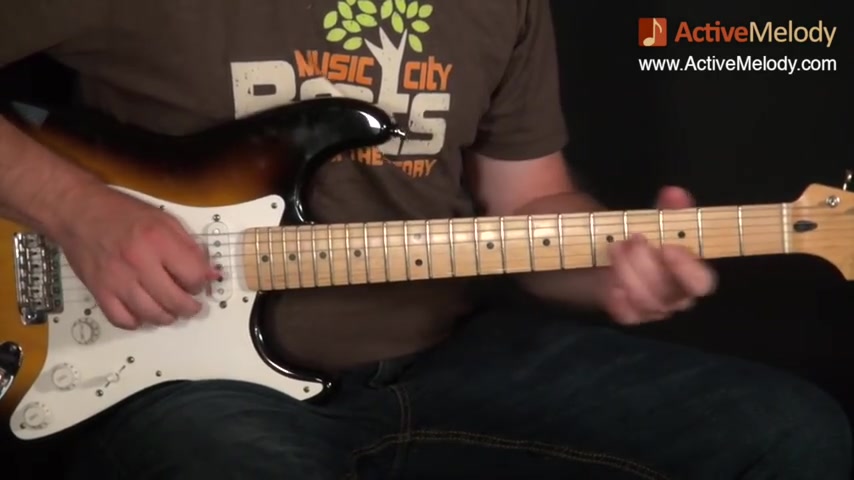
So let's , let's back up .
We'll play um , these two last two legs that we just learned .
It was the first one .
Now , the last thing that I did after I played that note as I jumped down and played the b seventh quarter , which is your turnaround .
So I took my middle finger and came down to the 2nd 5th string and then I put my pointer finger on the first fret , uh fourth string , ring finger on the second fret , third string , played those three notes which is strings five and that's what it looks like .
All right .
So let's back up and play everything slowly up to that point .
Now let me call out how you count this in .
So it starts like this , it goes 123 .

So this lick starts on the end of three .
So if we're counting it , so the end is between the three and the four , it says three and four .
So if you said one and two and three and see how it came in right on the end .
So that's kind of , it's considered like a some pickup notes that happened right before the measure which starts here .
All right , sorry , it starts here .
So that starts on the one of the next speech , 123 .
So this note is really the start and this is kind of your pickup but those two notes are they're pickup notes .
Ok ?

So here we go , we have 123 , 23 and that's really all there is to the first half and the second half comes up to this .
It's a little bit of a Freddie King influence there on that part .
But I'm gonna show you all that in the part two video .
So before you move on to part two though , make sure you go over this first part , especially these like very Jimmy .
Those are you gotta , you gotta know those if you're interested in playing his style .
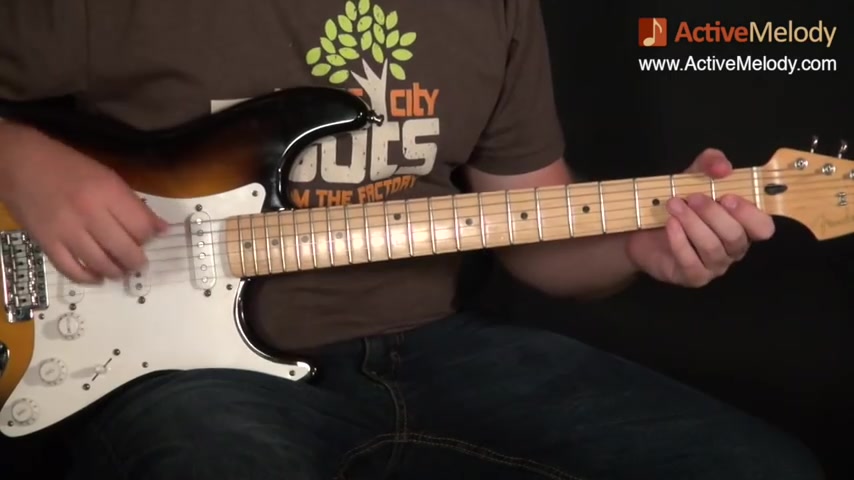
Um OK , so that's all we have in part one .
I'll see you in part two .
Are you looking for a way to reach a wider audience and get more views on your videos?
Our innovative video to text transcribing service can help you do just that.
We provide accurate transcriptions of your videos along with visual content that will help you attract new viewers and keep them engaged. Plus, our data analytics and ad campaign tools can help you monetize your content and maximize your revenue.
Let's partner up and take your video content to the next level!
Contact us today to learn more.